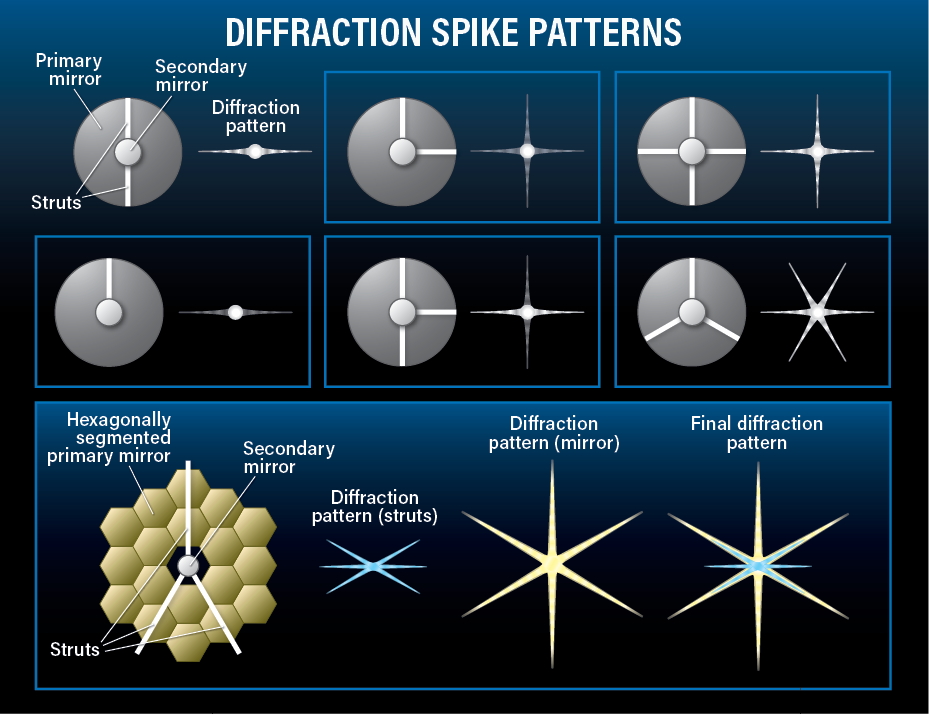
I learned in October 2022’s Breakthrough that the spikes of stars in high-power photos are called diffraction spikes. Why do they appear as two crosses at 45 degrees to each other?
Graham Smith
Werribee, Australia
The diffraction spikes so familiar to us in space images are an intrinsic property of the telescope. Reflecting telescopes have two mirrors: a large primary and a smaller secondary. Light hits the primary first and reflects onto the secondary before being reflected back through a hole in the primary mirror to the telescope’s focus (where the camera sits). That secondary is held in place by thin metal struts (collectively called the spider), and these struts are largely the cause of diffraction spikes.
As incoming light waves diffract (bend slightly) around the edges of the struts, the waves begin to overlap each other, causing an interference pattern like ripples overlapping in a pond. This interference pattern appears in the shape of the orientation of the struts; these are the diffraction spikes we see. For example, in Hubble Space Telescope images, we typically see four spikes at right angles to each other because Hubble has four metal arms holding its secondary in place.
But you’ll notice that images from the James Webb Space Telescope (JWST) have six large spikes and two small ones. This is where things get a bit more complex. JWST’s spider has only three struts, but in this case, not only these struts are diffracting incoming light; so are the 18 hexagonal segments of JWST’s primary mirror. (Hubble’s primary mirror doesn’t cause the same effect because it is a single round piece of glass.) Incoming light diffracts when it encounters the edges of each of JWST’s non-round segments. The telescope’s design is such that the spikes from the mirrors and the spikes from two of the spider struts combine, creating the six larger spikes. The two small horizontal spikes are from the remaining strut.
You can get many types of diffraction spikes, depending on the shape of your mirror (or aperture) and the number and orientation of secondary mirror struts. All point sources (i.e., stars) are affected by diffraction spikes, but brighter sources have larger spikes, which is why diffraction spikes appear obvious around the brightest stars but are unnoticeable in fainter ones.
Alison Klesman
Senior Editor









